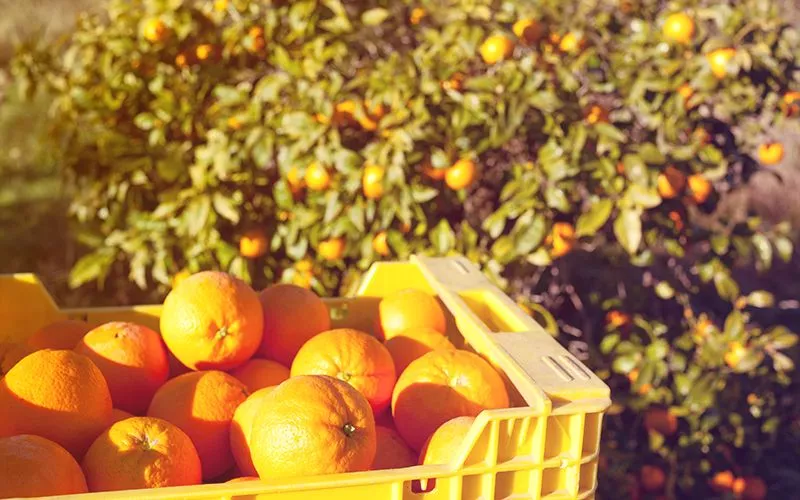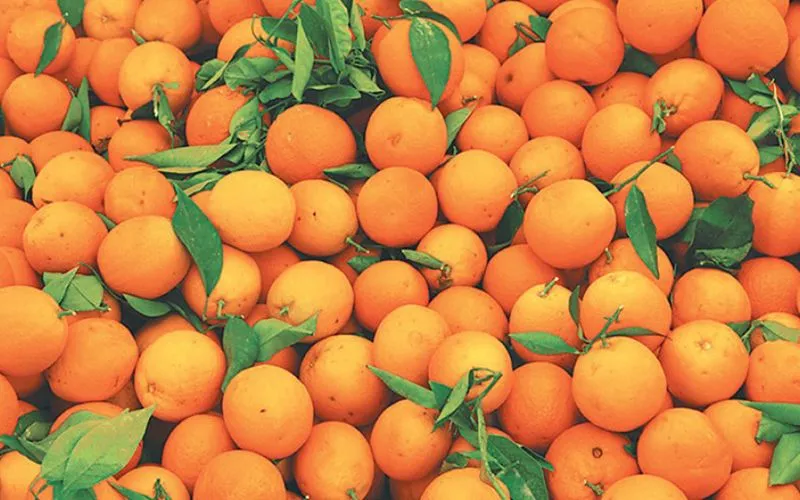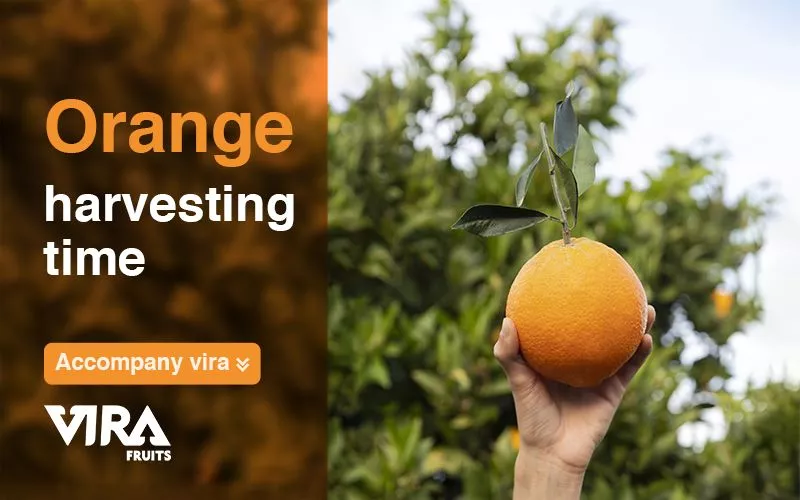Oranges reach ripening about 6-12 months after flowering and may be harvested within 2-3 months before they become overripe. Orange harvesting time depends greatly on the variety and the region. Oranges are typically harvested from October to June in the US, while Valencia oranges are often harvested from March to October. This is an example of a time difference in orange harvesting. If you are going to sell in the domestic market, the time of harvesting oranges is different. Oranges are usually harvested before they are fully ripe. When you see a couple of mature oranges falling off the tree, it’s time to harvest oranges. The peel of an orange doesn’t necessarily indicate whether it is ripe. To turn bright orange, the fruit needs cool temperatures; otherwise, it simply stays green but is still ripe. Oranges can remain on the tree for up to 14 months after they are ripe.
The orange is believed to come from sub-tropical areas in Myanmar, northern India, and southern China. Even today, the plant thrives mainly in subtropical and frost-free Mediterranean climates. Depending on the variety, oranges sometimes have long fruit ripening times; but their fruits do not necessarily have to ripen before winter.

Where do oranges come from?
You must first have enough information about oranges before you can be an exporter or a farmer offering the best oranges on the market. Why the orange is called what it is called is not clearly understood. “Or” means “golden” in French and “närang” means “bitter” in Persian, but there are a number of other possible roots and languages to which the name could be traced back. Another name for the orange is orange, which probably means something like “apple from China”. Both terms mean the fruit and the tree on which they grow. It is not true that the orange got its name from the color orange. It’s more likely that the color was named after the fruit. By the way, an orange color does not mean that orange is ripe. With consistently warm climatic conditions, such as in the tropics, the oranges remain green. Only when it gets cold at night, like in the European Mediterranean countries. Today, oranges grown in Asia, especially in Iran, are of high quality due to the favorable weather conditions in this area!

Harvest
However, orange harvesting time is different when it comes to oranges intended for juice production. In this case, farmers do not only stay in testing the exterior characteristics of the fruit in order to harvest. Fruit production companies require specific characteristics such as acids, sugars, and essences to buy the fruits. Thus, producers use special portable devices to measure those parameters.
The orange fruits are traditionally harvested by hand, with a combined movement of twisting and pulling the wrist. Some growers use clippers or shears and cut the stem. This is very common when harvesting fruits with a very thin crust.

When does oranges ripe?
Depending on the species, citrus fruits have to ripen on the tree for six to 18 months. Once picked, they no longer ripen. The high season for oranges and mandarins begins with the harvest time in southern Europe and extends from November to March.
Ripe oranges can be “stored” on the tree for up to 14 months. On the other hand, mandarins, when they are ripe, have to be harvested and processed quickly in order not to spoil.
The degree of ripeness depends on the sugar-acid ratio. Oranges and mandarins, some of which are still green, can be just as sweet and tasty as oranges. It is only an indication that the temperature differences between day and night were not great enough – because cool nights are necessary for optimal coloring of the skin.
Fruits should always be packaged so that they are not damaged. The same is true when orange harvesting time. Most citrus fruits, especially the varieties intended for fresh consumption, are harvested by hand. They are cut from the tree with special scissors, the clipper. An experienced picker can separate up to 100 kilos of fruit from the tree in one hour. Vibrating machines are also used for fruits from which juice is made. The plants are shaken mechanically and the fruits are collected in collecting tarpaulins.
